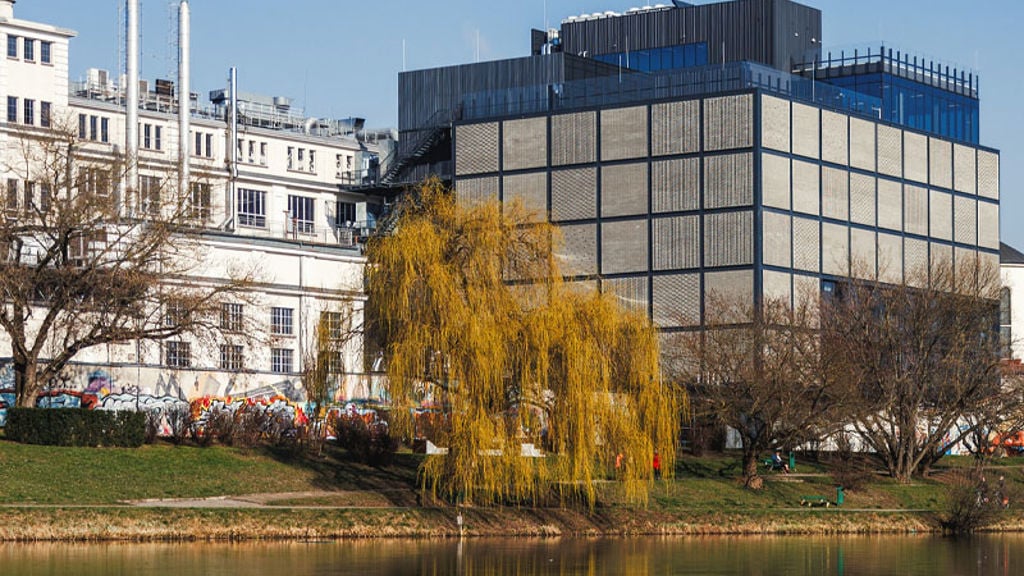A transformable theatre with unique performance spaces
Taipei Performing Arts Centre

What we delivered
-
A resilient structural system that provides the architectural design freedom while meeting Taipei’s high seismic demands
-
Performance-based fire engineering approach to demonstrate that regardless of the theatre configuration, the building could be evacuated safely
-
The compact format of the building lends itself to energy efficiency, self-shading and passive design
Get in touch with our team
Taipei Performing Arts Center (TPAC) is an international-standard facility inspired by a Chinese wood block puzzle, designed to satisfy the demands of the city’s contemporary art scene and advance Taipei as a world-class art capital.
The 58,000m² complex features three theatres plugged into a central cube that contains backstage areas, foyers, and front-of-house and support facilities. This enables the theatres to be used independently or in combination to create a Super Theatre. The lifted cube creates a landscaped plaza, with a free-access Public Loop showcasing the theatre’s usually hidden production spaces.
Arup provided engineering and consultancy input on structural, building services, sustainable design and fire engineering for this art landmark, for which OMA’s unique design won an international design competition in 2008. Our Beijing, Hong Kong, London and Los Angeles offices worked closely with OMA / Rem Koolhaas and David Gianotten and local partners, including KRIS YAO | ARTECH, throughout the competition, scheme and preliminary design stages.
TPAC is a true example of total design, where Arup’s groundbreaking engineering solutions were essential in realising the building’s ambitious configuration while ensuring sustainability and safety.
With the focus on resilience by base-isolating the building, the design minimises any damage to the structure, enabling it to be occupiable immediately after a severe earthquake. This provides a vital post-quake facility for the local community.
Resilient structural system
Due to Taipei’s high seismicity, the whole superstructure is base-isolated to attenuate the transmission of ground motions into the building, reducing the forces experienced by the structure and finishes by over 60% and enabling structural element sizes to be reduced and detailing simplified. With the first use of friction pendulum isolators in Taiwan, the structural system realised the most economic and resilient building possible for the location.
The three auditoria are supported on their projecting columns via networks of trusses. In the ellipsoidal Globe Playhouse, the 26m cantilevering volume is framed by a three-dimensional space truss occupying the space between the auditorium and outer shell, supported on the cube perimeter structure as well as the flying V-column. Balconies, circulation routes and servicing are threaded in between the truss elements.


Performance-based fire safety design
The architectural design of the transformable theatre space posed major challenges to fire engineering and ventilation. The myriad variations in stage and seating layouts of the Super Theatre configuration, in which the two main theatres are connected to create a giant auditorium with a 60m long central stage, made it difficult to be fully compliant with the local prescriptive code in terms of fire compartmentation.
Through a dynamic fire simulation analysis, we demonstrated that regardless of the theatre configuration, the building could be evacuated safely in the event of a fire without conventional fire separation methods such as enclosing the central stage area with fire shutters. In addition, we rationalised the building escape routes to optimise the theatre seating arrangements, reduce the number and width of staircases, and extend the safe travel distance. This solution created a more open and integrated space in the building and increased the number of seats, hence providing more revenue for the client.
Through the above, we successfully convinced the authorities that our comprehensive fire strategy meets the best safety standards despite the deviations from the local code, creating a template for approving other complex buildings in Taiwan.
Sustainable building environment
The compact design of TPAC brings about advantages in sustainable operation, including energy efficiency, self-shading and passive design.
To ensure our ventilation strategy would achieve optimal occupant comfort, we carried out extensive computational fluid dynamics analyses to assess the air flow through the auditorium and stage areas in their various configurations, taking into full consideration the needs of audience and performers as well as location and speed of air supplies. This demonstrated that satisfactory comfort could be achieved in the combined Super Theatre arrangement, avoiding the need to install additional ventilation equipment.

Rem Koolhaas & David Gianotten, OMA \ KRIS YAO | ARTECH / Evergreen Consulting Engineering Inc. / Heng Kai Inc. / I S Lin & Associates Engineers / dUCKS Scéno / Creative Solution Integration Ltd. / Royal HaskoningDHV and Theo Raijmakers (Level Acoustics & Vibration) / SMW / Inside Outside / Taiwan Fire Safety Consulting Ltd. / ABT / CDC Inc. / Segreene Design and Consulting / CNHW
Projects
Explore more arts and culture projects

Designing a creative outlet and unique venue for Bidi Bidi - transforming cultural life for Africa’s largest refugee settlement
Bidi Bidi Performing Arts Centre, Uganda

Securing the future of a 15th century building in the heart of Yorkshire
York Guildhall, United Kingdom

Advising on the transformation of 1950s silos building into a chocolate museum
E. Wedel Chocolate Factory and Museum, Poland

A space for creativity and community
The Black Library, United States of America
Get in touch with us
If you'd like to speak to one of our arts and culture experts then please get in touch by completing the form.

